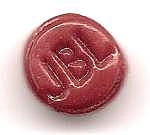Re-read post# 13.
That said, these crossover networks are not designed for generic use. Each network was designed for a specific set of drivers. If you read the crossover chart here:
http://www.lansingheritage.org/image...comp/page7.jpg
You will see you were already going about it all wrong, but with years of messing around you came up with something you liked.
Anyway, all of that aside, there are no 8 ohm LE85s. Some are printed with 8 ohms and some with 16 ohms. Typically they are
ALL more like 10-12 ohms. If you were designing a network, it would make a real difference, but going this route, I wouldn't sweat it. Keep screwing around until you find something you like or you blow something up. With care the risk of driver failure is low... you might create an impedance that your amp isn't thrilled with though.
Widget





 Reply With Quote
Reply With Quote Preliminary listening: an upper midrange hardness/glare seems to have disappeared and the subjective effect is increased presence and level in the bass region. On the top end: clearly more extension, air and detail revealed, e.g., the shimmer and decay of cymbals which was mostly absent before is now clearly present.
Preliminary listening: an upper midrange hardness/glare seems to have disappeared and the subjective effect is increased presence and level in the bass region. On the top end: clearly more extension, air and detail revealed, e.g., the shimmer and decay of cymbals which was mostly absent before is now clearly present.

 I'll do more auditioning with high quality LPs and SACDs, however, the midrange is over-emphasized with the N1200S to the detriment of warmth and the bass region. The deepest bass is fine, but the mid/upper bass balance is not as good as with the LX5.
I'll do more auditioning with high quality LPs and SACDs, however, the midrange is over-emphasized with the N1200S to the detriment of warmth and the bass region. The deepest bass is fine, but the mid/upper bass balance is not as good as with the LX5.

